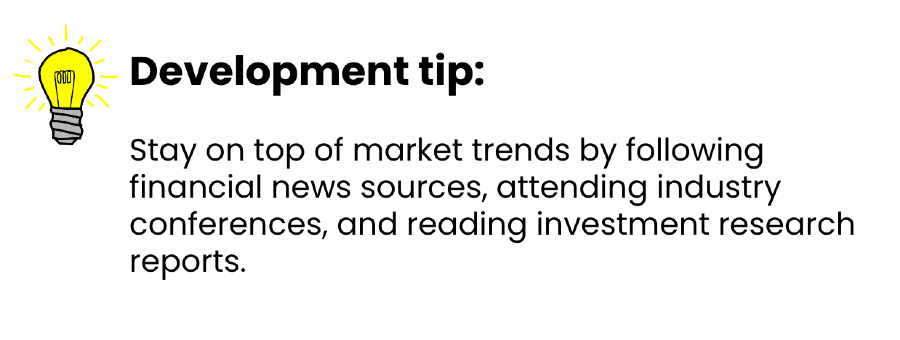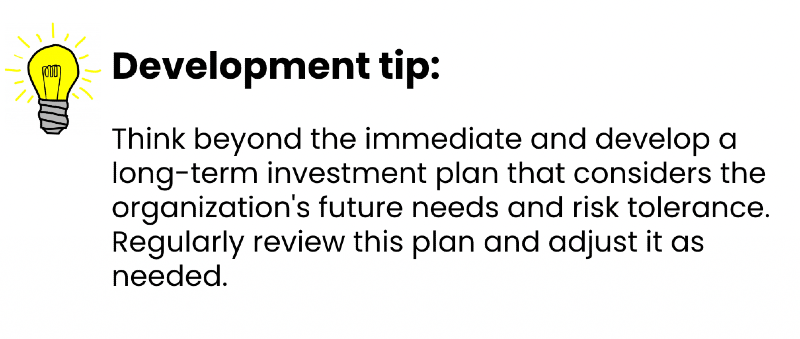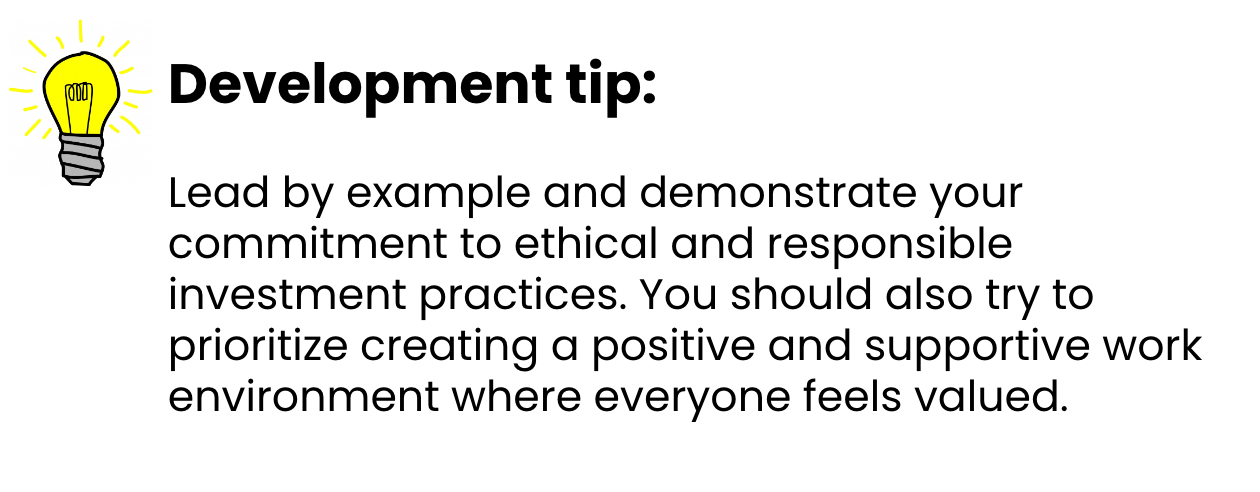Chief Investment Officer (CIO) vs Chief Financial Officer (CFO) - they’re two very important C-suite roles, and while they may seem similar at face value, these roles are completely different.
Each focuses on different areas of finance. While the CIO is mostly responsible for the company’s investment portfolio, CFOs oversee the entire financial operations of a business including budgeting, financial reporting, risk management, and more.
Want to learn more?
Keep reading to unpack the surprising differences between a Chief Investment Officer vs a Chief Financial Officer.
Key takeaways 👇
- CIOs prioritize maximizing returns, while CFOs ensure financial stability and control spending.
- While they may wear different hats, they have the same goal - to secure the company's financial success, just from different angles.
- Both roles require strong communication and leadership skills to collaborate effectively.
What is a Chief Investment Officer?
A Chief Investment Officer is a senior member of the C-Suite responsible for managing and overseeing a company’s investment portfolio. They’re constantly looking for the best ways to help grow the company’s wealth.
While not every company needs a CIO, you’ll often find them to be vital roles in financial and investment institutions, as well as in companies that have significant investments in financial assets, real estate, etc.
Some CIOs even choose to outsource the whole operation, hiring external investment firms to manage a portion (or all) of the portfolio. This lets them focus on broader strategic initiatives while leveraging the expertise of outside specialists.
Chief Investment Officer responsibilities
The role of a Chief Investment Officer is very important when it comes to building and managing a company’s investment strategy. While not every company needs a CIO, there are plenty that rely on their expertise to manage things like assets, investment portfolios, stocks, bonds, and more.
Sometimes, the CIO role gets bundled with other duties, or the CFO might handle these responsibilities. But one thing remains the same: someone needs to make sure those investments are working hard!
Alright, let’s get into some of the most important responsibilities of a CIO:
- Developing and managing the business’s investment plan and guidelines.
- Researching and analyzing profitable investments to find the most profitable opportunities.
- Deciding how to allocate investments across different types like stocks, bonds, and alternatives.
- Monitoring and adjusting the investment portfolio to make sure it aligns with the business’s goals.
- Evaluating and reporting on how well the investments are performing compared to benchmarks.
- Putting strategies in place to reduce and manage investment-related risks.
- Working closely with the executive team to ensure investments align with overall business objectives.
- Staying updated on market trends, regulatory changes, and economic factors affecting investments.
- Overseeing and managing any external investment managers or advisors the company uses.

Chief Investment Officer vs Chief Financial Officer: Key differences
While CIOs and CFOs share some similarities, their roles and priorities are vastly different.
Here’s a breakdown of the main ways the two roles differ:
🎯 Priorities
CIO: Their main priority is to maximize returns on the company's investments while managing risk – they want to grow the investment portfolio's value over time.
CFO: As the finance leader of a company, the CFO prioritizes the company's financial health and stability – their top priorities include budgeting, managing cash flow, and financial reporting.
🏹 Strategic focus
CIO: Maximizing returns from investments and managing the associated risks.
CFO: Focuses on the company's financial health, ensuring it remains financially stable and profitable.
🗂️ Reporting
CIO: Typically reports to the CEO and may also collaborate with the CFO on investment decisions that impact the company's overall financial health.
CFO: Reports directly to the CEO and oversees the entire finance department. They’re also responsible for all financial reporting to the board of directors and regulatory bodies.
🔍 Scope
CIO: Their scope is limited to managing the investment portfolio, including stocks, bonds, real estate, or other assets.
CFO: Has a much broader scope, encompassing all aspects of the company's finances. This includes accounts payable, receivable, financial reporting, taxes, and risk management.
💼 Compliance
CIO: CIOs need to follow the rules, especially investment laws. But their main job is to follow the company's investment plan.
CFO: CFOs are heavily involved in compliance and responsible for ensuring that financial practices adhere to laws and regulations.
🤝 Interaction with stakeholders
CIO: Often communicates with internal stakeholders about the performance of investments and may have interactions with external fund managers and investment banks.
CFO: Has a broader range of stakeholder interaction, including internal departments, external investors, regulators, and financial institutions.

Top 5 Chief Investment Officer skills
Success as a Chief Investment Officer requires a diverse skillset that blends financial expertise with leadership and vision. But what are the most important Chief Investment Officer skills? Here are five that keep showing up as ‘desired skills’ in typical CIO job ads:
1. Investment acumen
A CIO needs to be well-versed in financial markets, different types of assets like stocks and bonds, and various investment strategies. Having this expertise helps them spot promising investment opportunities, evaluate the potential risks involved, and make smart decisions that support the organization's overall objectives.
Without a strong grasp of investments, a CIO would struggle to effectively manage the organization's portfolio and maximize returns.

2. Risk management
Investments involve risk. So, a skilled CIO needs to identify potential risks, assess their likelihood and impact, and implement strategies to mitigate them. This helps to make sure the company is protected from unforeseen losses.

3. Strategic thinking and vision
A CIO doesn't just manage investments; they craft the investment strategy. This requires a clear vision of the company’s long-term goals and being able to develop an investment strategy that aligns with those goals.
As you can imagine, doing this effectively requires a strong ability to think strategically about long-term financial outcomes and make decisions that balance potential rewards with associated risks.

4. Communication skills
CIOs need to communicate complex financial information clearly and concisely to a diverse audience, from internal stakeholders to external regulators. This means that they must have great communication skills, especially when it comes to making sure everyone understands the investment strategy, its rationale, and its performance.

5. Leadership
As the head of the investment team, a CIO will be much more successful if they know how to lead, manage, inspire and direct a team of investment professionals. This will also help to build trust with colleagues and create a great culture of collaboration within the team.

FAQs: CFO vs CIO
What's the difference between CFO and CIO?
The CFO oversees the overall financial operations of a company, including financial planning, risk management, and financial reporting. The CIO specifically manages the company’s investment portfolio, focusing on investment strategy, asset allocation, and performance monitoring.
What is the role of a Chief Investment Officer?
The role of a Chief Investment Officer is to oversee the investment strategy and portfolio of a company. This usually includes responsibilities like managing asset allocation, analyzing market trends, ensuring compliance with investment policies, and optimizing returns.
How do you become a Chief Investment Officer?
Becoming a CIO usually requires experience in investment management or financial services. Most CIOs also have advanced degrees in finance, economics, or business, coupled with professional certifications like CFA (Chartered Financial Analyst).
What is the difference between CEO and Chief Investment Officer?
The CEO (Chief Executive Officer) is the highest-ranking executive in a company, usually the boss, who is in charge of making big decisions, running the whole company, and keeping the board of directors informed. The CIO, while high-ranking, focuses on the company's investment strategy and portfolio management
What is a Deputy Chief Investment Officer?
A Deputy Chief Investment Officer assists the Chief Investment Officer in managing and overseeing the investment activities of a company. This role often involves taking on significant responsibilities in the investment operations, including strategy implementation, research, and daily management tasks, particularly in the absence of the CIO.




 Follow us on LinkedIn
Follow us on LinkedIn




